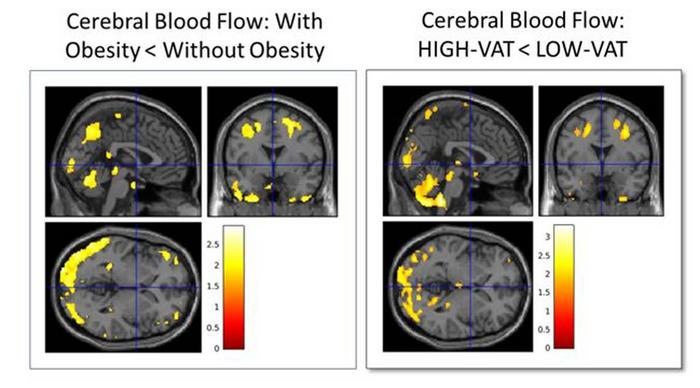How one health concern could predict Alzheimer’s disease decades before first symptoms occur
Alzheimer’s disease affects millions of Americans and is one of the top 10 causes of death in the U.S.
Someone in the U.S. develops Alzheimer’s disease every 65 seconds. Now, researchers say they’ve identified a new red flag that could help identify people who will develop the brain disease as many as 20 years before their earliest symptoms occur.
The physicians tied a specific type of body fat, known as visceral fat, to higher levels of abnormal proteins in the brain that are indicators of Alzheimer’s. Visceral fat builds up around and between internal organs and can increase the risk of serious health issues. It is different than subcutaneous fat, which is fat just below the skin.
“This crucial result was discovered because we investigated Alzheimer’s disease pathology as early as midlife — in the 40s and 50s — when the disease pathology is at its earliest stages, and potential modifications like weight loss and reducing visceral fat are more effective as a means of preventing or delaying the onset of the disease,” Dr. Mahsa Dolatshani, a post-doctoral research associate at the Washington University School of Medicine in Missouri, said in a statement.

Dolatshani was the lead author of an associated study presented Monday at the annual meeting of the Radiological Society of North America.
The authors examined the link between lifestyle factors like obesity and metabolism and the causes and effects of Alzheimer’s, studying 80 cognitively normal middle-aged participants. The majority of those included were women, and more than 57 percent were obese.
Those included in the study underwent MRI and PET scans, and had their cholesterol, glucose, and insulin levels measured. To examine the visceral fat, the doctors performed MRI scans of the abdomen and thighs. The PET scans were used to look at abnormalities in the brains of people with Alzheimer’s disease, including amyloid plaques and tau tangles, proteins that build up between nerve cells. They found that higher levels of visceral fat were related to increased amyloid accumulation.
The researchers also found that higher insulin resistance and lower good cholesterol were linked to high amyloid in the brain, but that the effects of visceral fat on amyloid accumulations were partially reduced in those individuals.

“Our study showed that higher visceral fat was associated with higher PET levels of the two hallmark pathologic proteins of Alzheimer’s disease — amyloid and tau,” Dolatshahi said. “To our knowledge, our study is the only one to demonstrate these findings at midlife where our participants are decades out from developing the earliest symptoms of the dementia that results from Alzheimer’s disease.”
They said that lifestyle modifications targeted at reducing visceral fat could influence the development of Alzheimer’s disease.
Nearly 7 million Americans who are 65 and older are currently living with Alzheimer’s. That total could grow to 13 million in the next 25 years. In most people, symptoms of Alzheimer’s disease appear after age 60. Alzheimer’s disease was the fifth-leading cause of death among people age 65 and older in 2021.
Join our commenting forum
Join thought-provoking conversations, follow other Independent readers and see their replies
0Comments